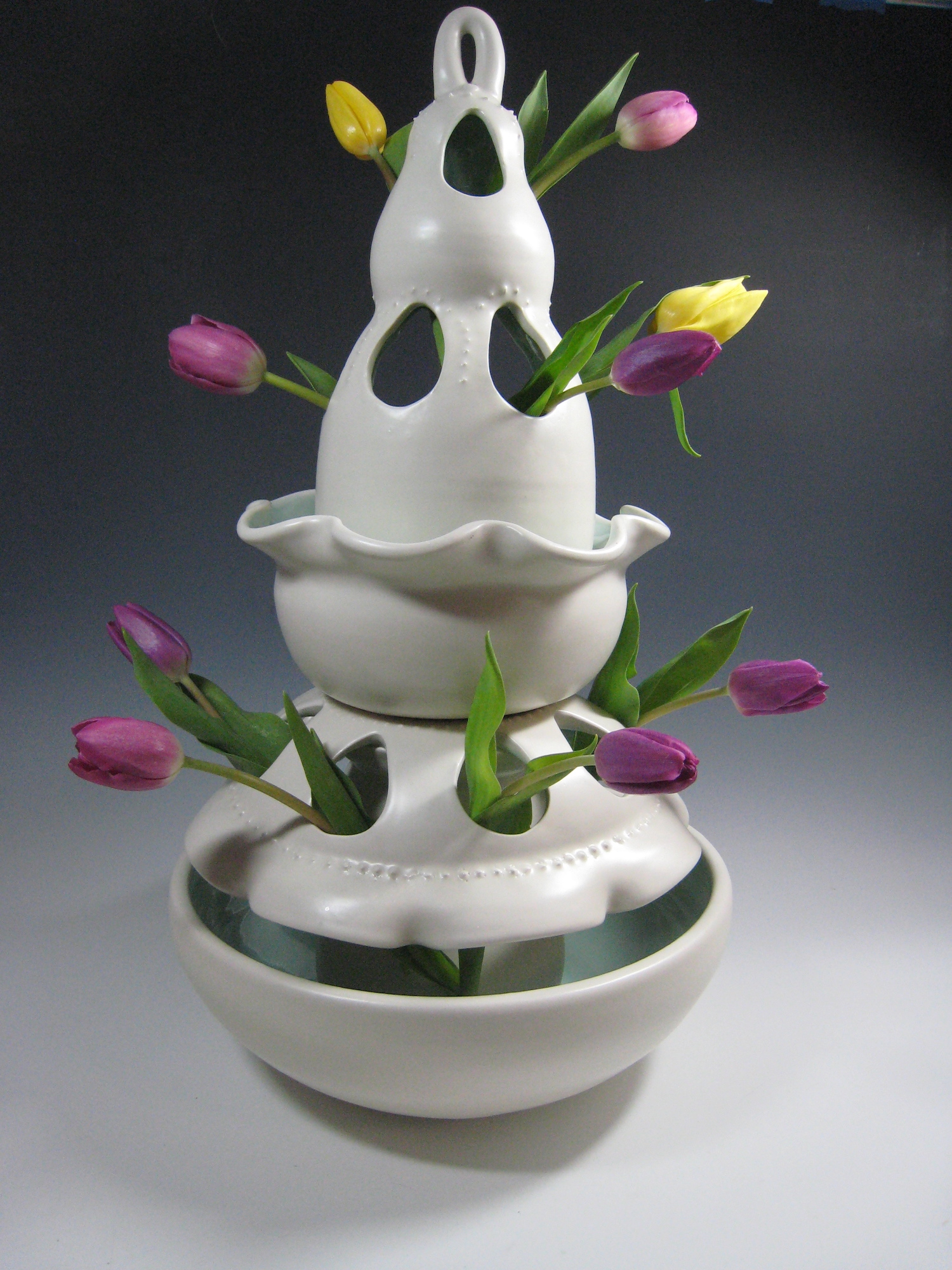In the classroom, whether in a traditional setting or an online environment, my ultimate goal for my students is for a greater understanding and appreciation for the processes and evaluation of art. To emerge from my courses with a better understanding of the materials we used, the processes needed to make well-crafted artwork, and how to evaluate a finished product. A student may not become an artist, but it is my desire for them to understand the techniques and time that goes into making art, and the ability to distinguish well made work as well as the themes and history behind it. I encourage practice; testing of materials, and trial and error for learning. Well-made objects are important, and I urge students to always use good craftsmanship when using any material.
With my ceramic students, we begin with exploring properties of the clay they are using, how the glazes were blended, and what method was used the to fire the work. I present new techniques using demonstrations, audiovisual and tactile examples. One method is cutting paper to practice form, or by making small sculptural samples to give them as many different application possibilities as possible. Students work in teams to fire the kilns with me, which helps to develop trust in each other, and confidence in their own capabilities. Ultimately being involved in all parts of the process enables a student to feel confident that they can carry the skills they have learned forward. Whether they become a ceramic artist or not, they will have practiced problem solving, teamwork, and how to ask questions of themselves and others and the satisfaction of
While teaching art appreciation online using the Blackboard and Moodle platforms, the task for exciting non- art majors about art seemed a bit daunting at first but I was able to bring exciting visual examples to the lectures by combining audio with video shorts of art being made using the materials we were studying. Although many of my courses were initially face- to- face classes in lecture hall seating, I had students put some of the techniques into practice at a small scale.
I have approached the task of making my class accessible to students needing accommodation by strategizing a plan with the student to complete the classroom tasks using new methods. In the case of a student who was missing most of her fingers, we worked together to modify techniques to allow her to use a potter’s wheel successfully.
Application of constructive criticism skills, engaging critiques and collaborative problem solving in my classes are lifelong skills that will support students in their future work environments. I have a joy and a passion for what I teach, and strive to make my classroom a constantly evolving learning community.

